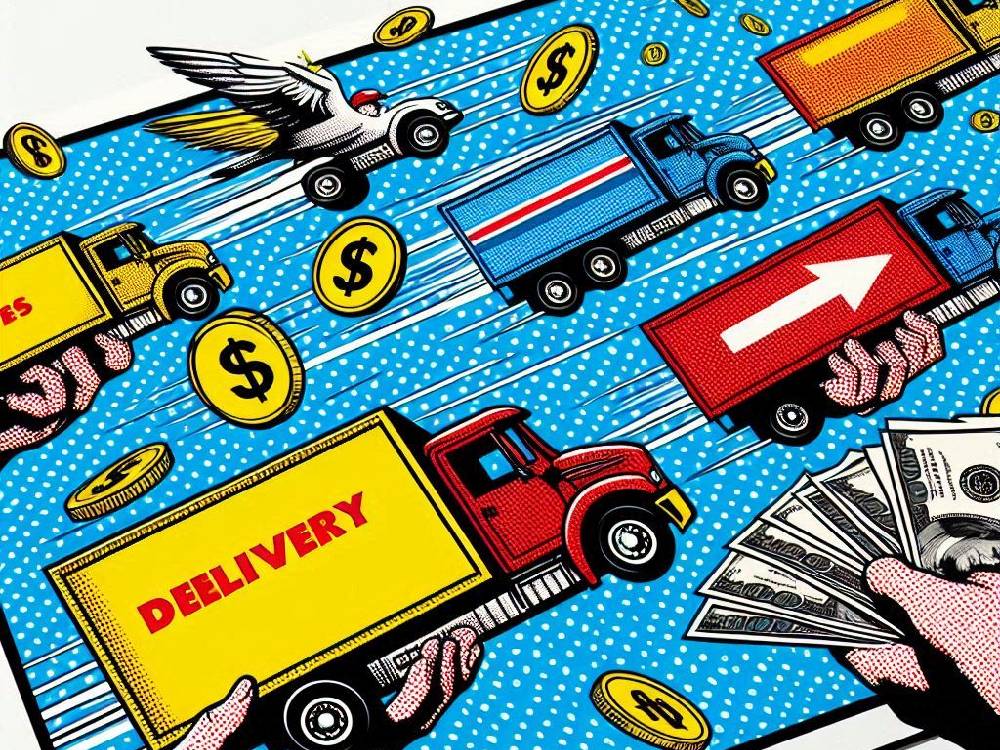Introduction
Couriers are paying more for van insurance than any other profession in the UK — and the numbers are brutal.
In 2025, delivery drivers are forking out four times more than some tradespeople.
But why the surge?
And more importantly, what can you do about it?
You’re about to find out what’s really driving your premium through the roof — and how to bring it crashing back down.
Van Insurance: Why Are Delivery Drivers Hit The Hardest?
Let’s not sugar-coat it:
As a result, delivery drivers are getting financially punished just for doing their jobs.
According to a 2025 industry survey, the average van insurance premium for couriers is £1,689 per year.
That’s not just high — it’s over £1,300 more than the national low.
By contrast, handymen are only paying around £382 annually.
What’s behind the massive gap?
Here’s the breakdown:
- Couriers cover more miles
- Make frequent stops
- They carry valuable items in transit
- Work to tight, time-sensitive deadlines
- And they’re often navigating high-traffic zones
Spend more time on the road?
More risk on the books.
More cash out of your pocket.
It’s that simple — and that unfair.
Which Jobs Face The Most Expensive Van Insurance?
Now let’s put things into perspective.
While couriers top the list, they’re not the only ones feeling the pressure.
Here’s how other professions stack up:
- Scaffolders – £603
- Construction workers – £582
- Plumbers – £499
- Painters and decorators – just £383
In fact, many of these trades fall below the £600 mark.
Compare that to the £1,689 couriers pay and it’s a jaw-dropper.
But it gets worse.
Scaffolders and construction workers arguably face physical risks too.
Despite this, delivery drivers are still the ones facing the steepest renewal hikes.
Why?
Because insurance isn’t about danger — it’s about likelihood.
And couriers?
They’re constantly moving, increasing their exposure with every parcel drop.
Couriers vs Everyone Else — A Brutal Comparison
Let’s zoom out.
Some of the lowest van insurance premiums in the UK are found in:
- Gardening
- Painting
- Decorating
- General maintenance
These trades typically keep their mileage low, their routes local, and their cargo cheap.
Delivery drivers, on the other hand, are on the road all day, carrying goods that range from mobile phones to fragile glassware.
Even small differences in mileage or van usage can skyrocket costs.
Here’s the kicker:
According to data, courier van drivers pay over 4x more than decorators for the same vehicle class.
If that sounds insane, it’s because it is.
Learn more about how this might affect your current policy here.
Are You Paying More Van Insurance Than You Should?
Here’s the good news:
You don’t need to accept a sky-high premium.
Even if you’re a courier, there are ways to get cheap van insurance without compromising on cover.
Let’s break them down:
- Update your mileage estimate
Overstating it? You’re throwing money away. Understating it? You risk voiding your policy. - Add security features
Steering locks, alarms, and immobilisers = instant credibility with insurers. - Pay annually
Monthly instalments come with interest. Avoid it if you can. - Use comparison tools
Don’t stay loyal — get quotes every year. No excuses. - Install a dashcam or black box
Show them how safely you drive. Let the data work in your favour.
For more quick wins, check out this article:
Navigating The Soaring Rise In Van Insurance Costs
Why “Low-Risk” Jobs Aren’t Always Safe From High Premiums
You might think you’re safe because you’re not delivering Amazon parcels.
But think again.
Professions like:
- Dog walkers
- Mobile barbers
- Freelance photographers
…may look low-risk on paper, but they involve constant travel between clients.
And yes, that still counts.
Insurers see movement as mileage.
Mileage as risk.
Risk as cash.
That’s the uncomfortable truth: it’s not what you do — it’s how far and how often you do it.
If you’re not careful, you could be overpaying without realising it.
Here’s why understanding your van’s compliance status is also crucial:
Why Proper Vehicle Compliance Is Crucial For Road Safety
Courier Insurance by Business Type: Who Pays What?
So far, we’ve looked at specific roles.
Now let’s shift the focus slightly — to entire industries.
When comparing van insurance premiums by business type, the difference is staggering.
Let’s take a look:
- Courier services – £1,711
- Corporate hospitality – £606
- Road transport – £564
- Waste disposal – £531
As you can see, couriers are paying over £1,100 more than some other sectors.
But why?
First of all, courier businesses often combine tight schedules, high mileage, and urban navigation.
As a result, their vehicles are exposed to far more claim scenarios than, say, a waste collection van on a fixed rural route.
Moreover, because many couriers operate in built-up areas, they’re more likely to face issues like traffic accidents, theft, and delivery damage claims.
In other words, couriers are battling on multiple fronts — and insurers know it.
Thankfully, there are steps you can take to lower your risk profile.
For instance, telematics can work wonders for your driving score and premium.
Find out more:
How Telematics Devices Can Save You Money on Van Insurance
The Real Reason Van Insurance Is Skyrocketing
Now that we’ve explored the data, let’s dig into the real reasons behind the rise.
In reality, several intertwined factors are driving insurance costs through the roof — not just one.
Let’s start with what’s impossible to ignore — couriers spend more time on the road than almost anyone else.
The longer you’re out, the higher your chances of something going wrong.
Secondly — and just as critical — online shopping exploded after the pandemic, flooding roads with delivery vans.
That means more vans, more parcels, and yes — more opportunities for accidents or claims.
Third, insurers also factor in location.
What’s more, delivering in the city means constant stops, tight streets, and far greater exposure to incidents.
This means more vehicles. More pedestrians, and more potential collisions.
Because of all this, insurers increase premiums as a protective measure.
Not out of malice — but mathematics.
Still, understanding the logic doesn’t make the cost any easier to swallow.
And if you’re a sole trader or part of the gig economy, the impact is often worse — simply because you lack the negotiating power of bigger firms.
So, what can you do to stay competitive and insured?
This article explains how some tradespeople are adapting their travel habits:
Why UK Tradespeople Travel Further for Better Pay and More Work
Conclusion
Truth be told, working as a courier often feels like an uphill battle — especially when it comes to insurance.
But don’t let the numbers win.
There are smart, strategic moves you can make today to slash your premium and still get quality cover.
- Shop around
- Declare your mileage accurately
- Invest in van security
- Use tech like dashcams or telematics
- Always compare — every single year
And remember:
Just because your profession carries risk, doesn’t mean your insurance has to carry a massive price tag.
Want to learn more?
Check out these related guides:






